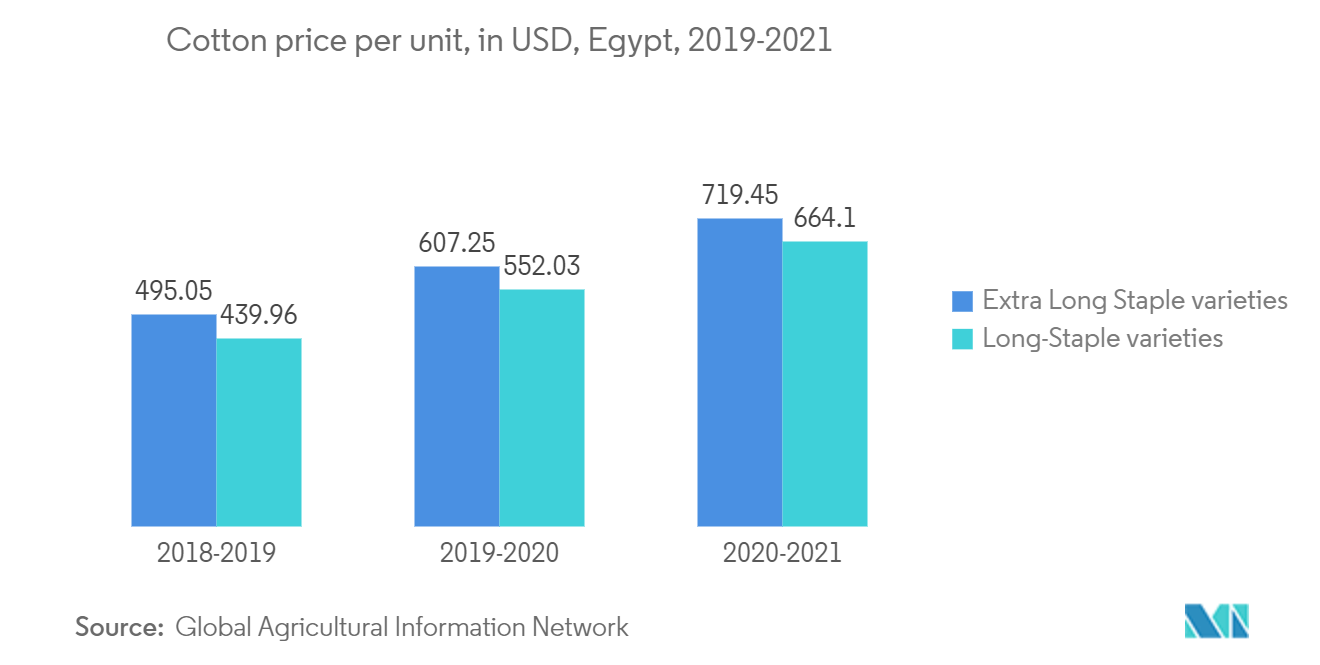Market Trends of Egypt Textile Manufacturing Industry
Increasing Trend in Exports of Raw Materials to Create Opportunities in the Market
About 90% of Egypt's raw material exports corresponded to cotton (not carded or combed) and artificial and synthetic fibers (mainly staple fibers, not carded or combed). Morocco was the primary destination (receiving 58% (USD 380,488 value) of Egypt's total fiber exports to Agadir countries.
Egyptian cotton production and exports increased in MY 2021-22, as Egypt's cotton harvested area increased by 30.77% to 85,000 ha from 65,000 in the previous MY. The expected increase in cotton production and increased global demand boosted the country's exports.
Increasing global demand for cotton is one of the reasons behind the increase in cotton acreage, and the recent rise in cotton prices has encouraged farmers to increase their production.
Cotton production in the country increased by 30.23% from 215,000 480 lb bales in MY 2020-21 to 280,000 480 lb bales in MY 2021-22. In terms of imports, the country's need for cotton imports is likely to decrease in the 2021-22 marketing year as cotton production was expected to increase compared to the previous marketing year.
Egypt imported 512,000 480lb bales in MY 2019-20, increasing by 23.05% to 630,000 480lb bales in MY 2020-21. MY 2021-22 imports decreased by 12.70% to 550,000 480 lb bales compared to MY 2020-21 imports.

Increase in Raw Material Prices and Existing High Wages May Expect to Restrain the Market
The locally available raw material is at higher prices, as there is an increase in cotton consumption by spinning mills at a 3% annual growth. This is because of the lower price of imported yams and the increased use of regenerated and synthetic fibers.
Wages in Egypt are higher than in competitors, whereas productivity is low. For example, wages in Egypt are USD 100-120, with 25-50% lower productivity than countries like Vietnam, India, and Bangladesh, which have wages at around USD 75-80.
The textile industry has lacked in embracing modernized equipment. Due to this, the cost of production is higher than in other countries. With continuous gas disconnection over months, gas load-shedding problems show up in the industry. The increase in the price of cotton and raw materials largely affects production. This is because of double-digit inflation and unstable internal conditions in Egypt.


